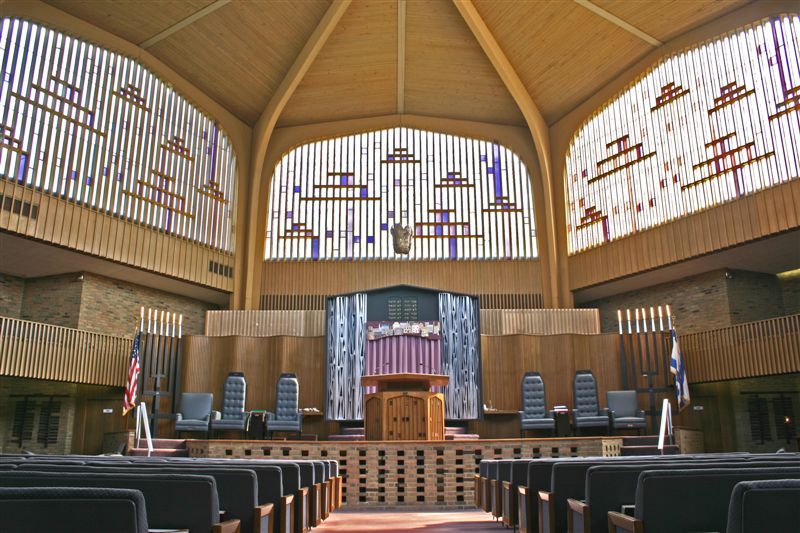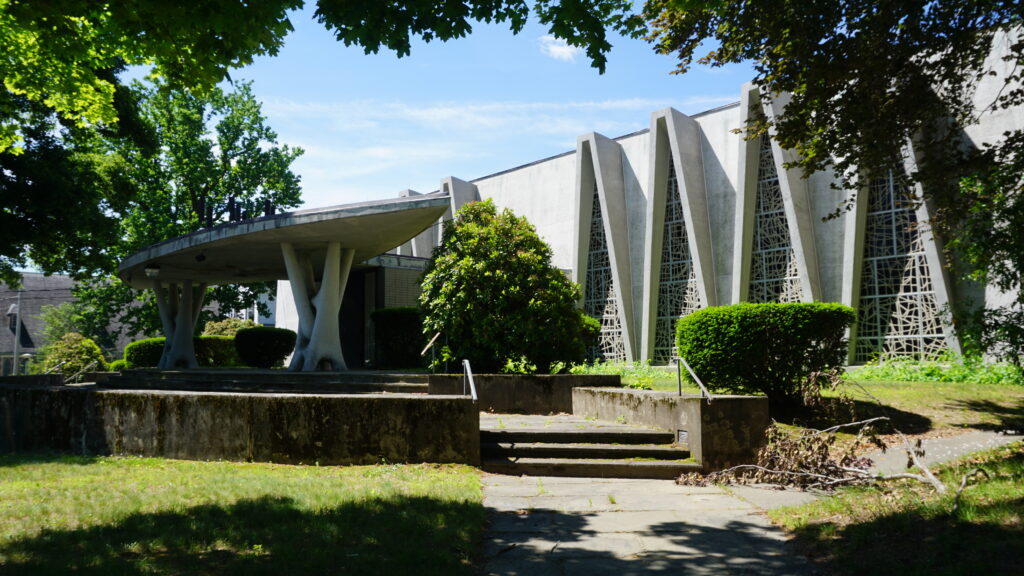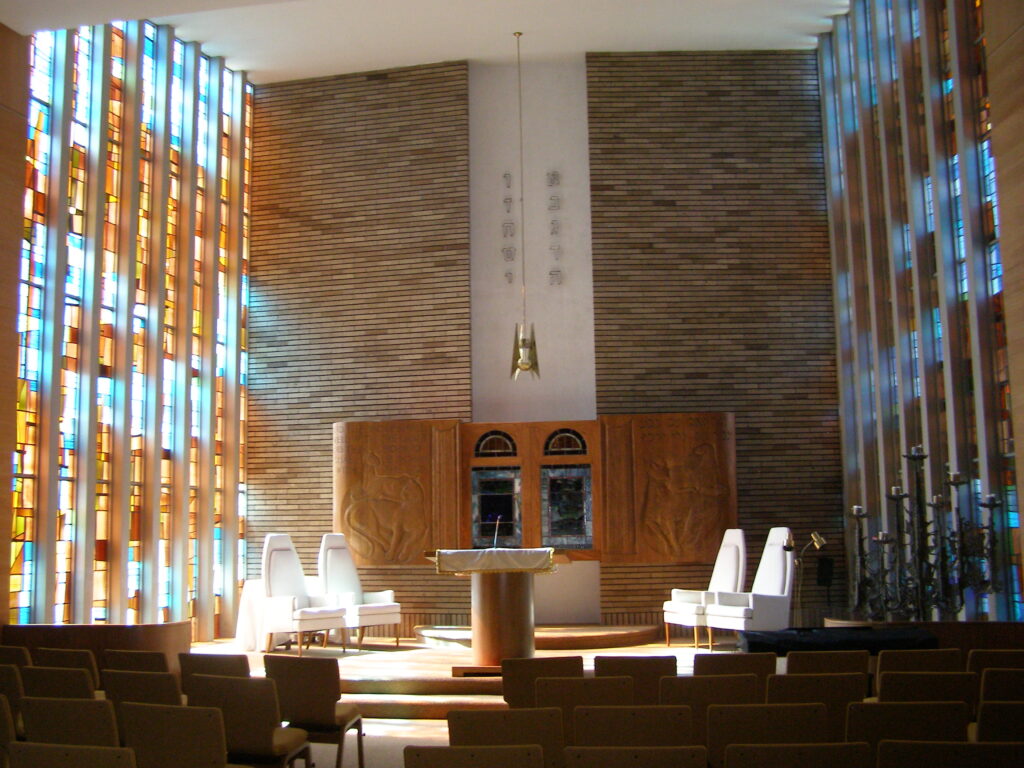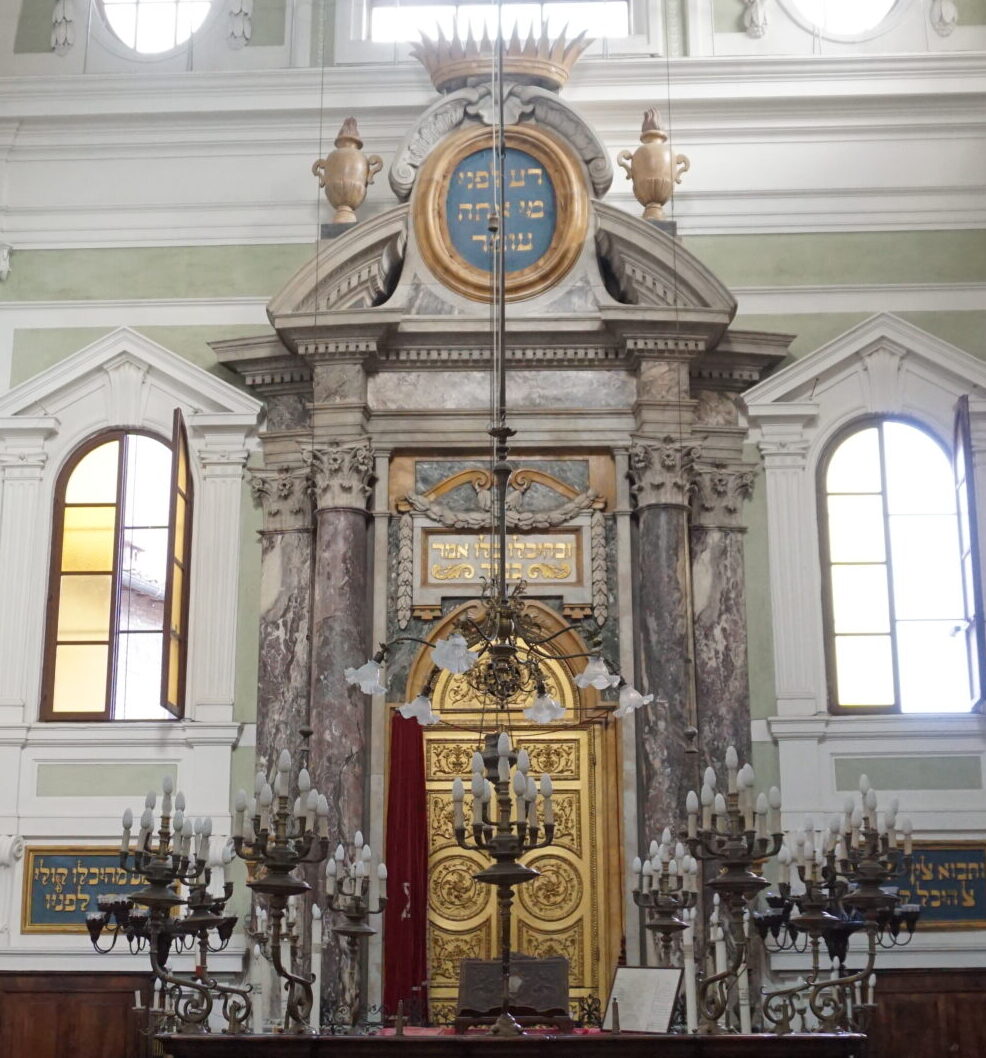Many social forces redefined the synagogue in post-World War II America and the quest for a new architecture language for expressing the needs, hopes and fears of American Jewry. Following the death and destruction of thousands of Jewish communities the Holocaust and contemporary with new beginnings in Israel, American Jews found themselves in a new social situation, too. The migration of Jews away from central cities to suburbia was fueled by the automobile, federal highway programs, the G.I. Bill and easy mortgages. New synagogue centers addressed, in a single location, many of the religious and social needs of Jews who formerly lived in multi-faceted neighborhoods. The responsibility of maintaining Jewish identity in increasingly heterogeneous suburban communities fell on synagogues. They rose to this challenge by expanding their worship, educational and social programs.

Architects created new synagogue designs which provided space for such programs. They also developed an architectural language that was appropriate to the new age and drew plans for open sites approachable only by automobile. Among the most effective pioneers in this new design were Erich Mendelsohn, Percival Goodman, Harrison and Abramovitz, and Sigmund Braverman, Through the early 1950s, they experimented in new spatial forms, construction materials, planning arrangements and the introduction of modern art into the architectural framework. Many of these developments remained through the 1970s extremely influential in synagogue design and subsequently in church design.

Our survey documents synagogues erected throughout America from 1945 through 1975, when new suburban congregations gained affluence and influence. They engaged both local and leading architects to create their new homes which often resembled mini-campuses rather than traditional stand-alone sanctuaries. Among the architects spotlighted are Frank Lloyd Wright, Walter Gropius, Philip Johnson, Pietro Belluschi, Davis, Brody and Wisniewski, Fritz Nathan, Sidney Eisenstat, Minoru Yamasaki, and Louis Kahn.

Many modern synagogues were designed by Jewish architects. For the most part, all these buildings have been poorly documented, if at all. Now, a half century after their construction, many mid-century synagogues have been or are being sold for new uses or entirely demolished. It is imperative that this legacy of post-World War II Judaism be recorded for posterity.
— Samuel D. Gruber
Read more here:

